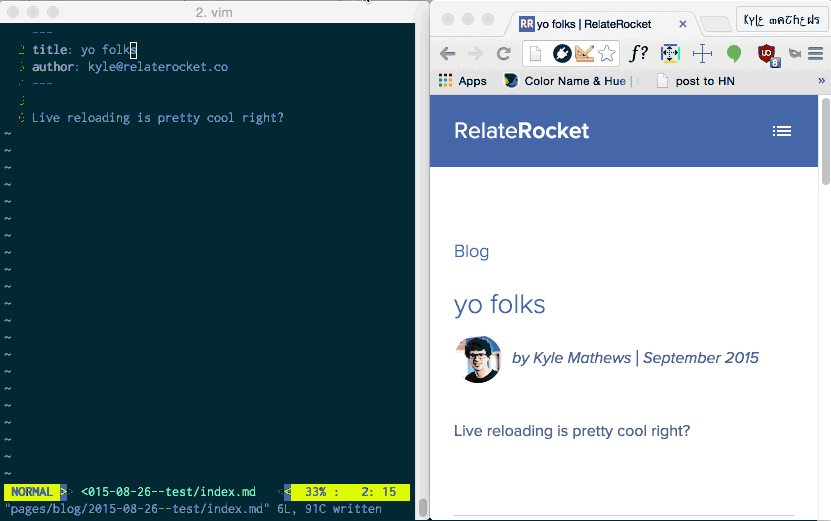Go Tour: Golang tour学习中的一些记录,帮组理解和记忆
设置GOPATH,可以改变go工作空间
工作空间中需要一个src目录,需要一个bin目录
导入package时,使用pkg的时候,只需要导入路径中的最后一段即可引用该包
go build or go install,注意目录
package中大写的定义是对外开放的,小写的则外面不可用
类型:string boolean int(int int8 int32 int 64) uint(…) complex(complex64 complex 128)
if else, for, switch, 没有while,while使用for代替
= 是赋值, := 声明并赋值
structs, array, slice, map, pointer
Function, Method
func 可以作为参数,有func闭包
Method则是定义于struct上的方法,如果是定义于struct值上的方法,不会改变struct值本身;如果是定义于struct指针上的方法,可以改变struct的值。
给struct定方法有2种方式,一种是把struct作为方法的receiver,另一种是把struct作为方法的参数。
两者有一个重要的差别:
functions with a pointer argument must take a pointer:1
2
3var v Vertex
ScaleFunc(v, 5) // Compile error!
ScaleFunc(&v, 5) // OK
while methods with pointer receivers take either a value or a pointer as the receiver when they are called:1
2
3
4var v Vertex
v.Scale(5) // OK
p := &v
p.Scale(10) // OK
当一个函数有一个指针参数,那么传入的参数必须是指针;
而当一个函数有一个指针的receiver,那么调用这个方法时,用指针或者值都是可以的。
- interface
type只要实现了interface的方法,即为interface的实现,无需显式的定义。
在底层interface values可以被看做是含value和type的一个元祖:1
(value, type)
an interface value that holds a nil concrete value is itself non-nil.
就是没有空指针问题
- Errors
function call的时候,就看err这个返回值,如果是nil,意味着成功,非空意味着执行报错了。
- Reader
Reader可以嵌套
Image
Goroutines
- Channels
Channels are a typed conduit through which you can send and receive values with the channel operator, <-.1
2
3
4ch <- v // Send v to channel ch.
v := <-ch // Receive from ch, and
// assign value to v.
(The data flows in the direction of the arrow.)
Like maps and slices, channels must be created before use:1
ch := make(chan int)
- Range and Close
channel能Range,也能close,只有sender能close channel,receiver不能。
一般不需要close channel,除非你需要显式的通知receiver channel已关闭。
- Select
它会监听case中的channel,当channel发生变时,再触发一次选择
- sync.Mutex
互斥锁
1 | // Inc increments the counter for the given key. |
